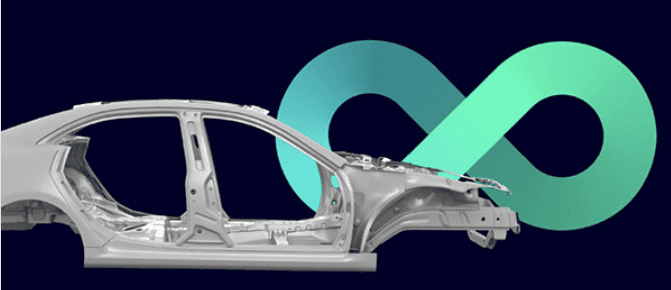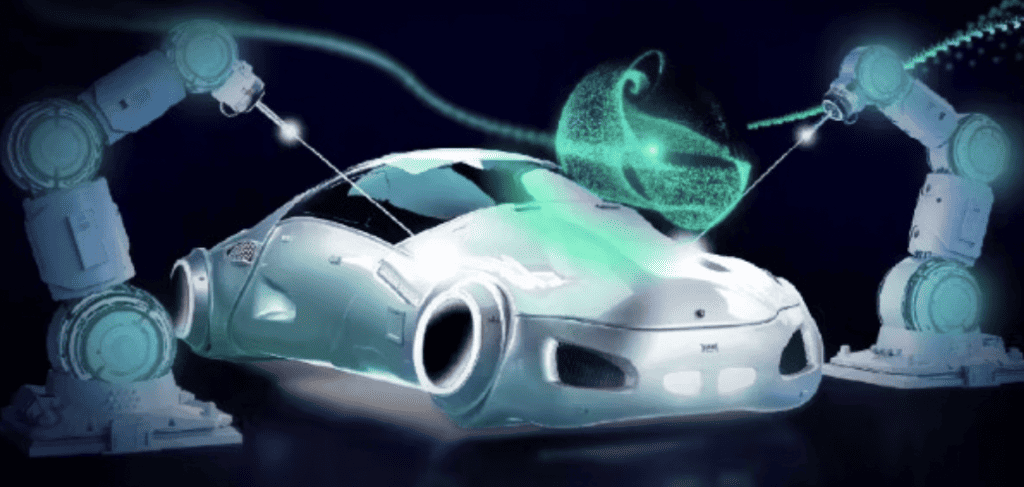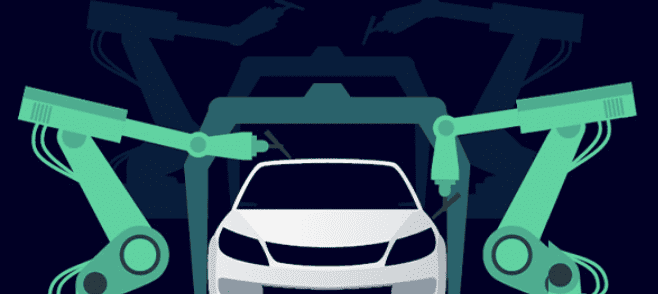
Virtual development is a tool for innovation and efficiency and will continue to be a cornerstone in the evolution of auto manufacturing, shaping the vehicles of tomorrow and the processes that create them.
The automotive industry stands at a crucial crossroads in an era where technological advancements and consumer expectations evolve at breakneck speed. C-suite executives of auto manufacturing companies increasingly recognize that success hinges on their ability to rapidly adapt to emerging technologies, shifting consumer preferences, and evolving regulations. Virtual development is a pivotal tool in this quest for innovation and staying ahead of the curve. This article delves into how virtual development is reshaping auto manufacturing and positioning industry leaders at the forefront of a transformative journey.
The Landscape of Auto Manufacturing
Today’s auto manufacturing landscape is marked by intense competition and a relentless push for innovation. Companies are grappling with challenges like the accelerated shift towards electric vehicles, increasing environmental regulations, and the complexity of global supply chains. In this high-stakes environment, agility and innovation are more than buzzwords; they are essential survival skills. The ability to quickly respond to market changes and technological advancements separates industry leaders from the rest.
The automotive industry’s shift towards virtual development is underscored by its significant investment in research and development (R&D). In 2022, the U.S. expected to invest approximately $48.4 billion in automotive R&D, about 39% of the global total. This trend is further emphasized by the global R&D spending in the sector, reaching 152 billion euros in 2021, with European companies leading the charge. Major players like Volkswagen planned to allocate around $20.9 billion to R&D in the same year, indicating a strategic focus on digital and virtual development technologies.
The shift towards virtual development brings advantages, enhancing efficiency, reducing costs, and aligning with market demands. Automakers are adopting comprehensive end-to-end virtual prototyping, encompassing design, engineering, manufacturing, assembly, and testing within virtual environments. This transition facilitates more agile and safer processes while significantly reducing scrap and emissions. Virtual development can help solve significant testing challenges in areas like autonomy and self-driving vehicles, as the volume of tests required for these systems cannot be realistically conducted in physical settings.
Moreover, virtual prototyping is critical in shortening the design-to-production transition, a crucial factor in an industry where time-to-market strongly influences competitiveness. This significance is reflected in ABI Research’s forecast, predicting a global vehicle sales growth of 5.1% in 2023 and 3.6% in 2024, highlighting a market ripe for rapid innovation and development. Embracing virtual development signifies not just a trend but a strategic imperative for the automotive industry, positioning it to lead in a fast-evolving, innovation-centric marketplace.
The Technologies and Tools of Virtual Development
Virtual development represents a paradigm shift from traditional development processes. It leverages cutting-edge technologies and tools to create virtual prototypes, digital twins, and simulations that faithfully replicate real-world conditions. These advancements empower auto manufacturers to innovate and optimize their products in a digital environment before physical production begins.
Some of the tools the industry is leveraging for development are:
- Virtual Prototyping: Detailed 3D models of vehicles, not just visual representations but digital replicas mimicking the physical properties of components, materials, and systems.
- Digital Twin Technology: Dynamic digital replicas continuously update with real-time sensor data, offering insights into vehicle performance for predictive maintenance and monitoring.
- Sophisticated Simulation Software: This is the backbone of virtual development, enabling extensive testing and refinement of vehicle designs and systems. It allows for evaluating prototypes and digital twins under various simulated conditions, significantly reducing the reliance on costly physical prototypes.
- Finite Element Analysis (FEA): FEA is crucial for assessing structural integrity. It breaks down designs into finite elements to identify weaknesses or areas needing improvement, ensuring vehicle safety and durability.
- Computational Fluid Dynamics (CFD): CFD optimizes aerodynamics and thermal management. It analyzes airflows and heat dissipation, enhancing vehicle performance, efficiency, and comfort.
- Multi-body Dynamics (MBD): MBD focuses on the vehicle’s dynamic behavior, crucial for optimizing handling, ride comfort, and safety. It assesses how components interact during various maneuvers, leading to better vehicle control and stability.
- Materials Science Advancements: This aspect involves simulating novel materials and composites to evaluate their suitability in automotive applications. It aims to produce lighter, more durable, and environmentally friendly vehicles, aligning with the industry’s sustainability goals.
A real-world example
BMW’s integration of virtual development technologies, specifically virtual reality (VR) and augmented reality (AR), is a compelling case study in the automotive industry. In their design process, VR enables designers and engineers to work collaboratively on 3D vehicle models, significantly accelerating the decision-making process and reducing the need for physical prototypes, as seen in the development of models like the BMW iNEXT.
In another example, GM employs the Cave Automatic Virtual Environment (CAVE), an immersive VR environment where projectors display virtual data onto the walls of a room-sized cube. This technology allows designers and engineers to become wholly immersed in the computer-generated graphics of a vehicle’s exterior and interior, enabling them to assess design aspects like mirrors, control placement, and overall quality. In addition, GM uses VR for global dimensioning and tolerance studies, visibility studies from the driver’s perspective, and reflection studies, providing crucial insights into the design process.
Advantages of Virtual Development in Auto Manufacturing
The advantages of virtual development in auto manufacturing are both diverse and significant, fundamentally transforming how vehicles are designed, tested, and brought to market:
- Cost Reduction: Automakers can undertake iterative design improvements without incurring the high costs of building and modifying physical prototypes. This approach saves direct material-related expenses and minimizes the indirect costs associated with time delays and logistical challenges. The ability to test and refine designs virtually translates to substantial savings.
- Time Efficiency: The accelerated product development cycles enabled by virtual development translate into faster time-to-market. By cutting down the time from concept to market, manufacturers can capitalize on market opportunities more effectively and maintain a competitive edge in the fast-paced automotive sector.
- Risk Mitigation: Through advanced simulations, potential issues can be identified and addressed before they manifest in the physical manufacturing process. This proactive approach reduces risks and avoids costly late-stage redesigns.
- Customization and Personalization: The market is increasingly geared towards personalization but displays limited tolerance for delays associated with these choices. Virtual development enables manufacturers to offer a broader range of vehicle customization and personalization options without substantially increasing production complexity or cost.
The Future of Auto Manufacturing
Looking ahead, virtual development in auto manufacturing is set to evolve dramatically. The future of this industry will be significantly shaped by the emerging technologies poised to enhance virtual development processes.
Artificial Intelligence (AI) and Machine Learning (ML) are revolutionizing the sector by increasing the predictive accuracy of simulations. This will streamline design processes and introduce a level of sophistication in complex system modeling that was previously unattainable. The automation capabilities of AI and ML will further expedite the design process, making it more efficient and effective.
Augmented Reality (AR) is another technological frontier transforming virtual development. It offers engineers and designers interactive and intuitive environments for design and testing. AR allows for more tangible interaction with virtual prototypes, providing real-time visualization and interaction capabilities that bridge the gap between virtual and physical realms.
Integrating the Internet of Things (IoT) and big data with virtual development tools is also key. As vehicles become increasingly connected, this integration allows for more dynamic and responsive design processes. It blurs the lines between virtual and physical vehicle development, enabling a more seamless and continuous development process.
These advancements herald a new era in auto manufacturing. They underscore the growing indispensability of virtual development as a tool for innovation and efficiency and driving sustainability in the industry. As we look to the future, it’s clear that virtual development will continue to be a cornerstone in the evolution of auto manufacturing, shaping the vehicles of tomorrow and the processes that create them.
Additional Resources

Drive production excellence with intelligent manufacturing
The automotive industry is facing unprecedented challenges, with rapid change and intense pressure to meet the demands of climate change, regulations, and consumers. Download Now

Modernize automotive factories with Siemens Smart Manufacturing solutions
Discover how automakers can transform their business with Smart Manufacturing solutions using state-of-the-art hardware and software to modernize production lines. Watch Now

Virtual Manufacturing Development for the Automotive Industry
Companies in the automotive industry are pushing to develop the next generation of autonomous, electric, connected, and shared vehicles. View Now









